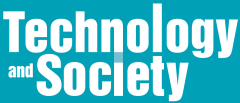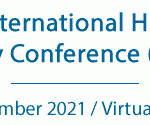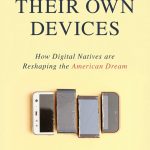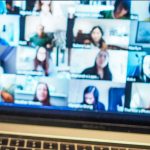With the century termed one of digital connect from the use of desktops at work, laptops at homes and handy… Read More



With the century termed one of digital connect from the use of desktops at work, laptops at homes and handy… Read More

For better or worse, we have become familiar with the idea that technologies profile people to deliver a service of… Read More

We can perhaps accept Weil’s starting premise of obligations as fundamental concepts, based on which we can also reasonably accept her assertion that “obligations … all stem, without exception, from the vital needs of the human being.”

The IEEE International Humanitarian Technology Conference (IEEE IHTC) is a Multi-Regional Conference Series rotating between R7 (Canada), R8 (Africa, Europe… Read More

Hosted by the Government of South Africa through the Department of Science and Innovation and Supported by the European Commission… Read More

Examining how face recognition software is used to identify and sort citizenship within mechanisms like the Biometric Air Exit (BAE) is immensely important; alongside this, the process of how “citizen” and “noncitizen” is defined, as data points within larger mechanisms like the BAE, need to be made transparent.

Public Interest Technology (PIT) is defined as “technology practitioners who focus on social justice, the common good, and/or the public… Read More

Damon Krukowski’s Ways of Hearing does for digital sound what Berger’s Ways of Seeing did for the reproduced image. He wants us to question what we hear, as well as what we’re no longer hearing, in the era of digital audio.

SusTech 2021 invites undergraduate and graduate students to submit abstracts for the Student Poster Contest by the extended deadline of… Read More

Principles taught to STEM students state that “engineers must gain an understanding of all the issues surrounding a particular design challenge. These issues might include the need for the project, relevant social and economic conditions of the target population, and project constraints and requirements.” Engineers and problem-solvers are not the problem. Short-term thinking is the problem. Wishful thinking is the problem. “It will do for now” is the problem.

Albright’s book focuses on a group of Americans who live a life of digital hyper-connectivity. Mostly under age 50, this would include what are called Generation X (born between 1965 and 1979), Millennials (born between 1980 and 1999), and their offspring — some, as we have seen, still infants.

Clint Andrews, Professor of Urban Planning and Development at Rutgers University, is 2021-2022 President of the IEEE Society on Social Implications of Technology.

Contemporary circumstances in the United States, both in broader politics, recent protest movements around police brutality, and in the demographics of engineering education, have prompted us to look for new ways to bring theory on gender, race, and class to audiences who would not normally consider it their usual reading.

In 2021, Terri Bookman will become SSIT Administrator, and Heather Hilton, IEEE Publications Staff, will be Editorial/Production Associate for T&S Magazine
An anonymous donor will match any donation to SSIT up to a total of $5K donated before the end of the year. This matching gift would result in a total of $15K to SSIT.

Technological determinism is a myth; there are always underlying economic motivations for emergence of new technologies. The idea that technology leads development is not necessarily true, for example, con-sider AI. It has been a topic of inter-est to researchers for decades, but only recently has the funding caught up, matching the motivation and enabling the development of AI-ori-ented technologies to really take off.

It is “seeing” that is most compelling when analyzing the relationship between architecture and race, especially, for example, when reexamined in literary works such as F. Scott Fitzgerald’s The Great Gatsby. Adrienne Brown, a professor who specializes in American and African American cultural production at the University of Chicago, takes her readers on a journey that recounts seeing racial characteristics in the early period of American skyscraper construction.

RFID, even though it underlies electronic toll collection and other systems we interact with every day and is poised to become practically ubiquitous, is far less conspicuous. Jordan Firth’s A Billion Little Pieces aims to bring RFID into the foreground, giving readers a sense of what the technology is, how it is being and could be used, and how concerned we should be about its implications, especially those regarding privacy.

Why are all of these nations and their assorted consortia heading to Mars? Are they truly exploring to improve the human condition, to expand and share scientific knowledge?

*Now a Virtual Conference* — IEEE ISTAS 2020 Public Interest Technology (Arizona State University) November 12 – November 14 – The International Symposium on Technology and Society (ISTAS) is the flagship conference of the IEEE’s Society on the Social Implications of Technology- the oldest society and conference of its kind. ISTAS is a multi/inter/trans-disciplinary forum for engineers, policy makers, entrepreneurs, philosophers, researchers, social scientists, technologists, and polymaths to collaborate, exchange experiences, and discuss the social implications of technology.